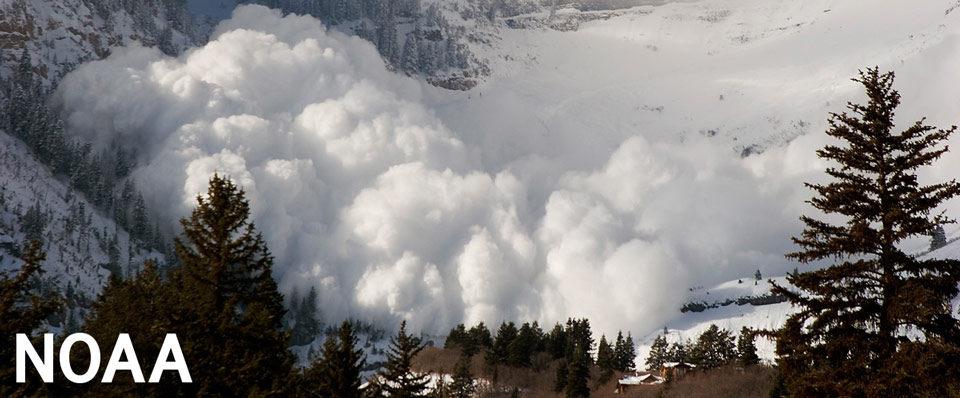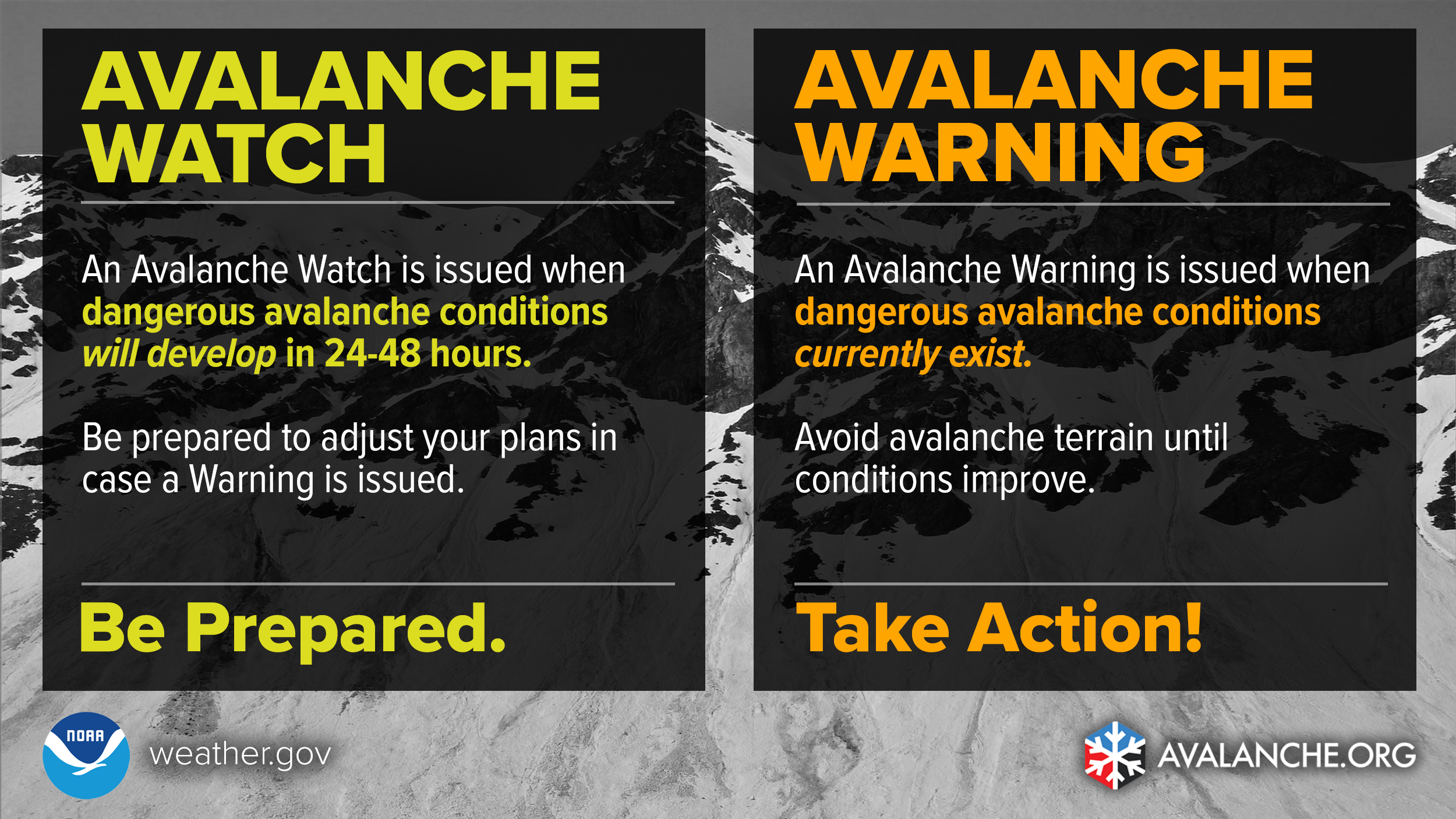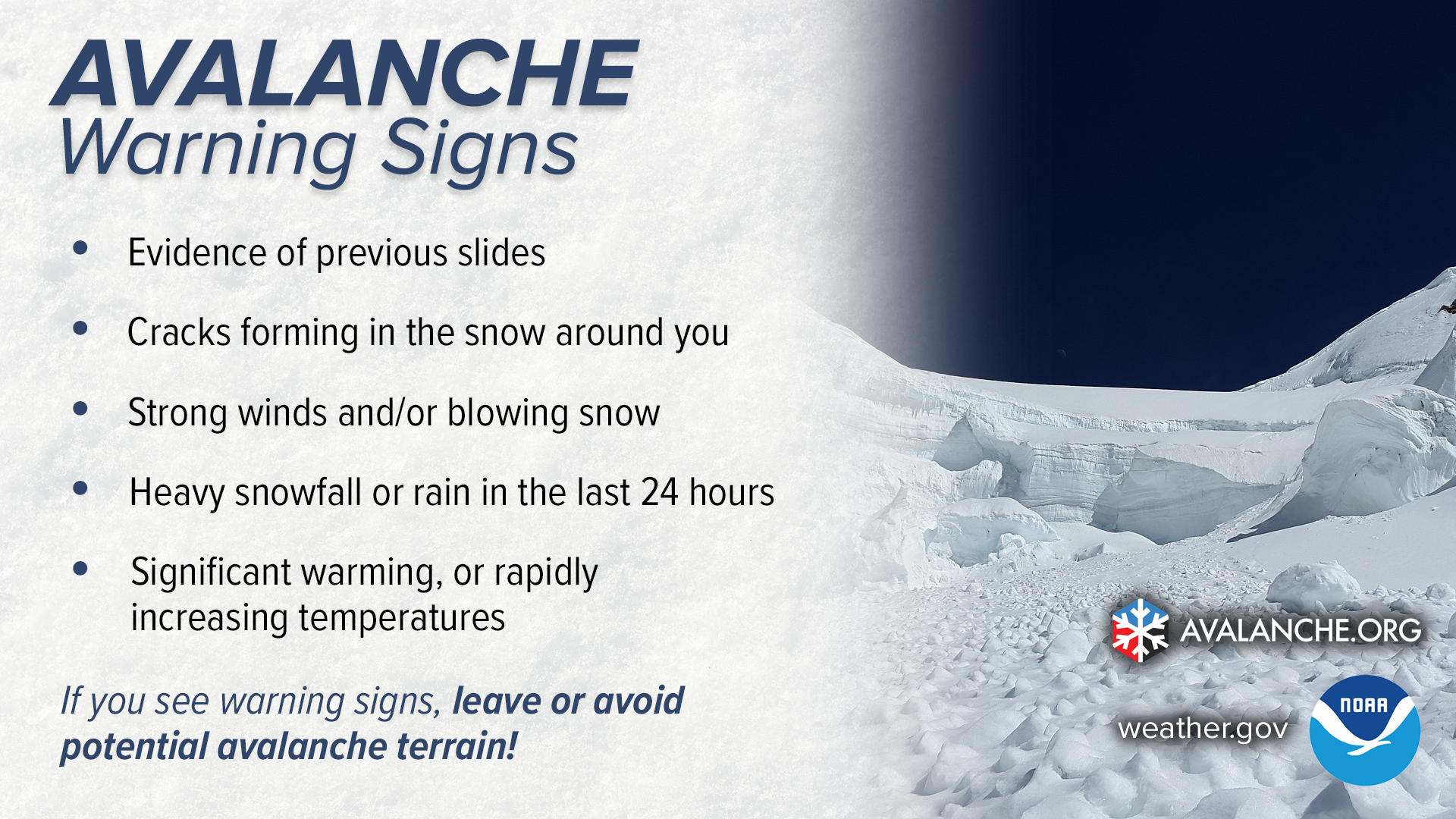
An avalanche occurs at an elevation of 10,500 feet at Elk Point, Utah, in the Wasatch Mountain range. (Bruce Tremper/U.S. Forest Service Utah Avalanche Center)
December 5, 2021 - Ready to ski, snowboard and snowmobile? If you plan to venture into the backcountry this winter, having the latest weather and snow conditions is critical — especially when the potential for avalanches is high. In the winter of 2020-2021, there were 37 avalanche-related deaths in the U.S., making it the deadliest avalanche season in a decade.
NOAA’s National Weather Service (NWS), the U.S. Forest Service National Avalanche Centeroffsite link, and the Colorado Avalanche Information Centeroffsite link are working together to get you the information you need to keep you safe and informed while enjoying winter recreation.
Weather forecasts and observations are vital
NWS meteorologists at 27 weather forecast offices in avalanche-prone areas across the country gather detailed weather observations and produce weather forecasts daily, which include new snow totals, snow water equivalent, probability of precipitation, wind, temperature and sky cover. That information is compiled into a product called Avalanche Weather Guidance, which helps avalanche forecasters, search and rescue teams, and emergency managers better understand how the weather will impact snow stability.
New NWS Avalanche Weather Webpages deliver easy access to current avalanche information. These webpages display NWS-issued weather alerts relevant to avalanche interests and all Avalanche Watches and Warnings issued by the Avalanche Centers with polygons to pinpoint weather and avalanche information for a specific location.
Arm yourself with avalanche forecasts
Avalanche forecasters at the Avalanche Centers and the Colorado Avalanche Information Center offsite linkuse weather forecasts and observations combined with terrain and snowpack data to create avalanche forecasts. These forecasts provide an assessment of the avalanche danger and associated snowpack and weather conditions. If conditions warrant, forecasters will also issue avalanche Watches and Warnings, which are distributed by NWS.

Avalanche danger ratings
There are 5 warning categoriesoffsite link that estimate how dangerous the conditions are for an avalanche to occur:
1. Low: Avalanche conditions are generally safe but look out for unstable snow on isolated terrain features
2. Moderate: Avalanche conditions are heightened in specific types of terrain; evaluate terrain and snow carefully and identify features of concern
3. Considerable: Dangerous avalanche conditions; evaluate snowpack and plot routes very carefully and be conservative when making decisions
4. High: Very dangerous avalanche conditions; do not travel in avalanche terrain
5. Extreme: Avoid all avalanche terrain

Know before you go
- Get the forecast: Arm yourself with the weather forecast and avalanche forecastoffsite link.
- Get the gearoffsite link: Always carry an avalanche transceiver, probe and shovel. Know how to use them.
- Get the trainingoffsite link: Avalanches are complex phenomena. Learning how to spot unstable terrain and slopes that are steep enough to slide can help you avoid a potential avalanche.
And, make sure you have a partner if you travel in the backcountry. A good partner can help you make decisions and is essential if things go wrong. Learn more about avalanches and how to survive one.
Source: NOAA








